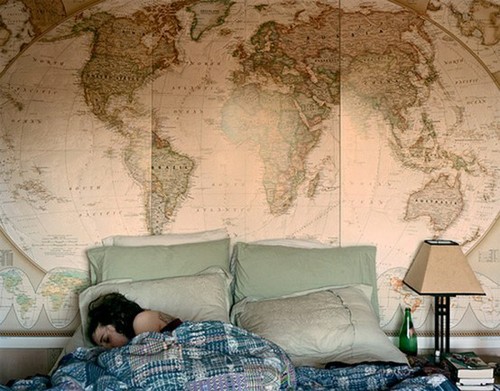
Image source: https://umquartoaolado.files.wordpress.com/2013/02/25614291600146433_mrjv2rw4_c_large.jpg
From ancient times we have tried to make sense of the world around us and it is this drive to understand and document our environment has given rise to one of arts' least appreciated gems - antique maps and cartography.
Although today we are used to maps as dry, functional things that we occasionally reach for when lost, it was only a few centuries ago that they commanded the attention and wonder normally reserved for great works of art.
Cartography as Art
The earliest maps date back to ancient Greece and the works of the Greek astronomer Ptolemy from the 2nd century are still referred to now as elegant examples of the rise of early cartography.
Map making went into decline during the Medieval era as leading thinkers concentrated more on religion and spiritual matters than the details of geography. However with the rise of European navies in the 16th and 17th centuries all this changed with cartography attracting not only the best geographers and astronomers, but also attracting the attention of many skilled artists.
During this time cartography took on new importance with many commercially produced maps being considered valuable works of art as well as useful tools for maritime travellers.
Given that maps in the past were very valuable objects, it is no surprise that they were treated in much the same way as art, as objects to be cherished by their owners. In addition many cartographers were accomplished draftsmen due to the nature of their profession, and often embellished their work with decorative details such as sea creatures and mythical gods.
Now many are looking again at the artistry of antique maps as an exciting and unusual addition to their home decor options. With many possibilities, from original antiques to wall tapestries, they are being appreciated by more and more people looking for something a little different.
Original Maps
Many antique maps are available to buy from specialist retailers online. These cover almost every conceivable area of cartography, from grand world maps from the 17th century, to 19th century maps of US states.
Originals from centuries ago are quite rare, although given their nature of use on long sea voyages they were built for endurance. Because of their rarity they can often command prices in the tens of thousands of dollars range. Even modest maps, physically small and dating from only 150 years ago, can cost thousands of dollars.
However much they cost there is no doubt that, properly mounted and framed, these impressive testaments to history can make a very dramatic statement.
Prints and Posters
A great many famous world maps have been reproduced as prints and posters. Some of the best examples from history are now available, and are a real treasure trove of information as well as a unique piece of wall art.
One of the most popular is Typus Orbis Terrarum by Abraham Ortelius (1527 - 1598). It covers the known world of the 16th century and is a testament not only to the craftsmanship of cartographers but it demonstrates an impressive level of knowledge for its day. It's dark, coffee-colored hue emphasizes its age, an effect further enhanced by the wealth of detail on the map itself.
Maps like this often work well as framed artwork. Even posters, properly framed, can look dramatic and expressive, adding an unusual touch to any decorating scheme. With their often warm, earthy tones and subtle detail they can enliven almost any environment, and are a striking way for history lovers to decorate.
Wall Tapestries
Although prints enjoy a unique position in home decor popular world maps are increasingly available as luxury wall tapestries. The woven nature of tapestry art adds depth and texture to these already impressive works and makes a distinct alternative to framed art.
A growing number of antique maps are now available. A particularly impressive example is one of the most famous maps ever produced in the 17th century; namely Jan Baptist Vrient's Obis Terrae Compendiosa, meaning "A Brief Representation of the World".
It contains an astonishing amount of detail and like earlier maps that it was based on it is decorated with numerous details including symbolic figures at each corner, exotic animals and fauna from the far-off shores it represents and landscape vignettes. As with all quality wall tapestries it's subtlety and vitality transfer well to textiles, adding an almost antique quality to and already distinctive work of art.
Because wall tapestries are textile based the weave often helps lift the original work making for a quite dramatic piece of decor. The best quality tapestries do an impressive job of not only reproducing the original detail, but add considerably to their charm and people can be quite taken aback at their distinctive nature.
Something for every taste
Nowadays many people are looking to antique maps to add some charm and history to their home decor. With a vast array of options to choose from, including posters, prints and wall tapestries, there's never been a better time to appreciate these unique works of art.
Copyright (c) The Tapestry House, all rights reserved.